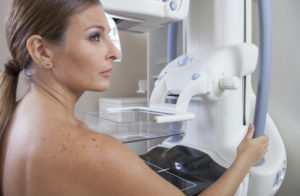Intestinally Yours
 In our continuing series on gastrointestinal imaging, today we’re talking about the small bowel or small intestine. The small intestine is key in absorbing nutrients in our food. Why would you need an imaging study of the small bowel?
In our continuing series on gastrointestinal imaging, today we’re talking about the small bowel or small intestine. The small intestine is key in absorbing nutrients in our food. Why would you need an imaging study of the small bowel?
The small bowel is a coiled tube in the abdomen up to 23 feet in length connecting the stomach and the colon. In contrast to the stomach and colon which are easy to evaluate by endoscopy, much of the small bowel is beyond the reach of endoscopes.
Symptoms which might prompt a small bowel evaluation include:
- diarrhea
- blood in stools
- abdominal pain
- malabsorption
- suspected partial small bowel obstruction
- inflammatory bowel disease
- anemia
There are two types of fluoroscopy exams a patient can have to evaluate the small bowel: a small bowel series or a small bowel enteroclysis.
How does a patient prepare for small bowel imaging?
The prep for these studies is simple: no food or drink by mouth for 4 hours. Clothing with metal will need to be removed. Radiation is used, so these studies are not performed in pregnant women. If you have an allergy or sensitivity to oral barium please advise the radiologist.
What can be expected of a small bowel imaging procedure?
Both exams will start with a preliminary film which is used to assess the gas in the intestine. Signs of obstruction or bowel perforation may lead to the exam being cancelled or modified.
1. Small bowel series For this procedure, the patient will be given barium to drink. Sufficient barium is necessary in order to fill up the small bowel in order to image it. Next, we will take a series of x-rays to follow the barium through the entire small bowel all the way to the cecum (first part of colon). Additionally, we will take images with gentle compression of the small intestine including the terminal ileum which is the point at which small bowel ends and joins the colon. Please note it can take up to 4 hours for the contrast to travel all the way through!
2. Small bowel enteroclysis This procedure uses a tube placed through the mouth or nose until the tip is in the first part of the small bowel. This tube is used to instill a solution of barium at a rate which distends the small intestine and limits normal peristalsis (those normal contractions which move food along). Images are then taken in the same method as above. The entire study can take up to 3-4 hours to complete.
So, what are radiologists looking for? What can we expect to find?
Images from either method will allow a beautiful depiction of your small bowel anatomy and a little about how it is functioning. Imaging can find:
- tumors – benign polyps and cancers
- inflammatory bowel disease IBD (inflammatory bowel disease)
- infections
- strictures or narrowings which might partially block small bowel – frequent in patients with IBD
- fistulas or abnormal communication between bowel loops – frequently found in patients with IBD
- celiac disease
After a small bowel exam, drink lots of fluids! This will help flush out the contrast that was introduced for the exam.
The small bowel series and small bowel enteroclysis are methods of viewing the elusive small intestine. The resulting images can be phenomenal. We love being able to see into the human body to get you on the road to your best possible health!
Originally published 7/21/14 on diagnosticimagingcenterskc.com.





